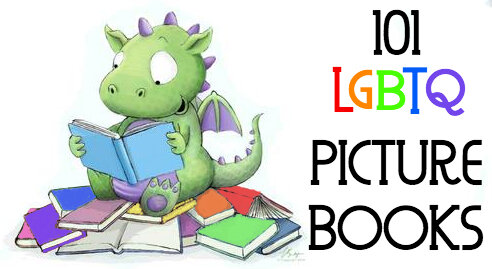More Scholarly Articles!
Interested in doing you own research? Here are links to some of the scholarly sources I used!
Using Picture Books to Disrupt Gender Norms by Andrea Breau
This article, posted to the diverse book finder blog, describes a read aloud where Breau uses a book that doesn’t specify character gender to disrupt essentialist assumptions of gender, for example that girls have long hair and boys have short. This enables children to verbalize the norm and explore how it makes them feel.
Messages Matter: Investigating the Thematic Content of Picture Books Portraying Underrepresented Racial and Cultural Groups by Krista Maywalt Aronson, Brenna D. Callahan, and Anne Sibley O’Brien
By the cofounders of the diverse book finder (more on that in my post), this article explores the impact and significance of different types of diverse books on children of all races. Findings include:
1) Picture books are tools for promoting social norms, values, and expectations. An absence of diverse characters perpetuates bias.
2) Simple exposure to diverse characters is not enough; to be truly effective, books must contain positive messages (ex. for cross-group friendship messages to be effective, the book must portray characters fun, everyday, relatable activities without mention of inequality). Books should be discussed to ensure kids understand the positive messages.
3) A balance of stories in a collection is key.
The article also provides an in-depth analysis of books in each of the diverse book finder categories: “Beautiful Life,” “Any Child,” “Biography,” “Folklore,” “Cross-group,” “Oppression,” “Concept,” “Incidental,” and “Informational.”
“T” is for “transgender”: an analysis of children’s picture books featuring transgender protagonists and narrators by Jamie C. Capuzza
This article analyzes 55 transgender picture books published between 2008 and 2018. Capuzza explores specifically how the literature challenges or not the gender binary (the idea that there’s only two genders, man and woman), gender essentialism (saying that all girls like pink, trucks are boy things, etc), sex/gender congruency (aligning sex at birth to gender), and gender stability (the opposite of gender fluidity). In general, the books do well at separating sex and gender, but end up affirming the gender binary,
While the author affirms the positive value of stories, they remark that the overwhelming whiteness, middle-classness, and focus on acceptance into a cis world, do more to “reduce the anxiety of cisgender people than support transgender children by challenging deeply engrained social assumption about gender.” This is a great critical framework for evaluating the quality of books with transgender characters.
Hetero-Romantic Love and Heterosexiness in Children’s G-Rated Films by Karin A. Martin and Emily Kazyak
This article researches the ways that heteronormativity is constructed for children. They argue that the media is a key way in which children under the age of 6 internalize the concept of heteronormativity. The top G-rated movies from 1997-2005 contained two important depictions of heterosexuality, the transformative power of heterosexual love (such as in Beauty and the Beast) and the normality of gazing at the objectified female body (such as the lewd looks that Esmerelda from The Hunchback of Notre Dame gets). In addition, the heteronormative main romance of these movies were portrayed as powerful and magical, which only increases the desire to buy into the system of heteronormativity.
They also note that women of color are more likely to be portrayed as sexy with emphasized cleavage and curves whereas, there are few examples of white women as sexy. Not only are women of color eroticized and sexualized in movies like Aladdin and The Hunchback of Notre Dame, but villains are more likely to be darker skin while the heroes sport lighter tones—for example, compare the skin tones Jafar and Aladdin or Ursula and Ariel.
The Danger of a Single Story by Chimamanda Adichie
This TED talk presents the downfalls of presenting someone or something in only one way. Adichie presents her own experience on both the assuming and the receiving end of a single story. This is a brilliant argument for telling a diverse selection of stories to avoid critical misinterpretations of someone’s experience.
